Reissue CDs Weekly: Peter Laughner | reviews, news & interviews
Reissue CDs Weekly: Peter Laughner
Reissue CDs Weekly: Peter Laughner
Major box-set tribute to the important American underground catalyst
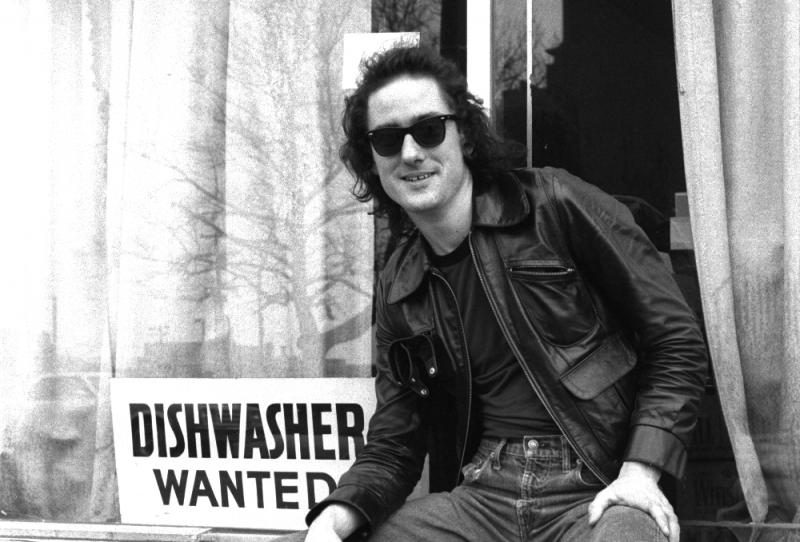
“As much as I love New York City, it’s all too obvious that Cleveland is about to become the musical focal point that the Big Apple has been on and off since the beginning of the century,” wrote Peter Laughner in October 1974.
Laughner’s full-page article in Cleveland newspaper The Plain Dealer pointed to the north-east Ohio city’s 15-60-75, Jimmy Ley and Mirrors as the bands who would represent this breakout. “If you haven’t heard these groups, you won’t know what the Northern Ohio area is capable of bringing out,” he asserted. Laughner proclaimed himself part of the talent pool too. Cleveland had already hit the charts with Raspberries, whose smash single “Overnight Sensation” was issued the month before the article but Laughner he wasn’t bothered about chart bands even if they were local heroes. Home-grown Sixties stars The Outsiders and Raspberries precursors The Choir weren’t on Laughner's wavelength either.
 He knew what it took to make a mark in his take on musical history. Cleveland had been a regular stop for The Velvet Underground from before their first album was issued. The city was open to innovators and future members of Mirrors paid close attention to the Velvets when they were in town. Laughner had seen Bowie’s Ziggy Stardust show there in November 1972. A month later, he was in the front row for Lou Reed. The city was already central to rock history. Twenty years before Laughner saw Reed, locally based DJ Alan Freed helped put on the Moondog Coronation Ball, an important early marker in the growth of rock ‘n’ roll. Nowadays, Cleveland is the home of the Rock and Roll Hall of Fame museum.
He knew what it took to make a mark in his take on musical history. Cleveland had been a regular stop for The Velvet Underground from before their first album was issued. The city was open to innovators and future members of Mirrors paid close attention to the Velvets when they were in town. Laughner had seen Bowie’s Ziggy Stardust show there in November 1972. A month later, he was in the front row for Lou Reed. The city was already central to rock history. Twenty years before Laughner saw Reed, locally based DJ Alan Freed helped put on the Moondog Coronation Ball, an important early marker in the growth of rock ‘n’ roll. Nowadays, Cleveland is the home of the Rock and Roll Hall of Fame museum.
Needing platforms to proselytise, Laughner began writing about music in August 1973, and was and would be published by the magazines and newspapers Exit, The Plain Dealer, The Star, Zeppelin and, from mid-1975, the Detroit-based and nationally distributed Creem, edited by Lester Bangs; one of Laughner’s prime influences.
In print, Laughner’s interviews and reviews chronicled his particular world view; one especially clouded by the Velvets, Lou Reed and the band’s other former members. He reviewed the first New York Dolls album, Kraftwerk’s Autobahn and Mott the Hoople’s Mott when they were issued. He named his dog “Mott”. The inexhaustible Laughner was also very big on Dylan and Patti Smith, and pointed readers towards Charles Bukowski, Eddie Cochran, Eno, John Fahey, Garland Jeffreys, Little Feat, Harry Partch, Roxy Music, Phil Spector, The Stooges, Richard Thompson, the early Who, The Yardbirds and even Queen. His writing was peppered with tales of his own drinking, drug abuse and, on occasion, sexual activities. In December 1973, lucky Zeppelin readers were told how he had lost his virginity at 14.
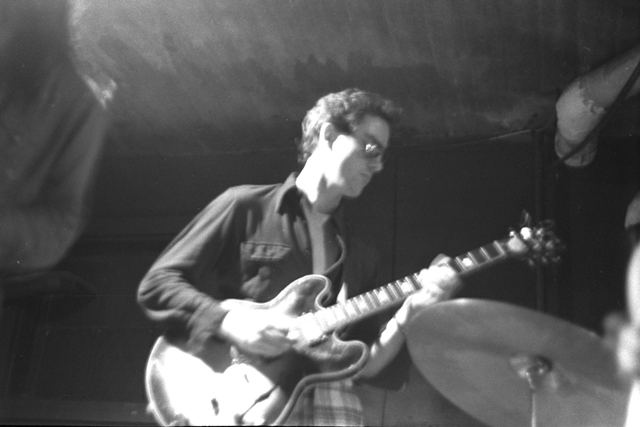 In addition to writing and working in a record shop he also, from October 1971 until his death in June 1977 at age 24, formed or joined these bands: The Mr. Stress Blues Band, The Original Wolverines, Cinderella Backstreet, Le Jazz Dogfood, Brain Damage, Ruby and the Harptones, Blues Drivers, Tiny Alice Jug Band, Cinderella’s Revenge, Fins, Rocket From The Tombs, Television (Laughner briefly rehearsed with them in 1975 after Richard Lloyd temporarily departed following the release of “Little Johnny Jewel”), Pere Ubu, Peter and the Wolves (a different outfit to The Wolves), Friction (named after the Television song), Cleveland Blues Underground and The Wolves (another band of the same name: his final band). He also played solo. Despite the ceaseless activity, during his lifetime he was only heard on two singles; the first pair of Pere Ubu releases. (Pictured left, Peter Laughner with Cinderella Backstreet in 1973. Tom Herman / Cynthia Black)
In addition to writing and working in a record shop he also, from October 1971 until his death in June 1977 at age 24, formed or joined these bands: The Mr. Stress Blues Band, The Original Wolverines, Cinderella Backstreet, Le Jazz Dogfood, Brain Damage, Ruby and the Harptones, Blues Drivers, Tiny Alice Jug Band, Cinderella’s Revenge, Fins, Rocket From The Tombs, Television (Laughner briefly rehearsed with them in 1975 after Richard Lloyd temporarily departed following the release of “Little Johnny Jewel”), Pere Ubu, Peter and the Wolves (a different outfit to The Wolves), Friction (named after the Television song), Cleveland Blues Underground and The Wolves (another band of the same name: his final band). He also played solo. Despite the ceaseless activity, during his lifetime he was only heard on two singles; the first pair of Pere Ubu releases. (Pictured left, Peter Laughner with Cinderella Backstreet in 1973. Tom Herman / Cynthia Black)
All this confirms that if anyone was going to be an advocate for and influencer in Cleveland it was the frenzied Peter Laughner, a man obsessed with the poet-spirit of rock ‘n’ roll.
But October 1974 was a little too early to sell Cleveland via the pages of The Plain Dealer. The first significant steps in Pere Ubu’s door-opening leap forward came in 1976. And with Patti Smith, Television, The Ramones and the rest, New York was on the rise in 1974. Laughner knew this as he saw a Smith/Television booking in NYC the next year. Further recognition that a competitive between-city clock ticked came when Laughner brought Television to Cleveland in July 1975 and billed them with his own band, Rocket From The Tombs.
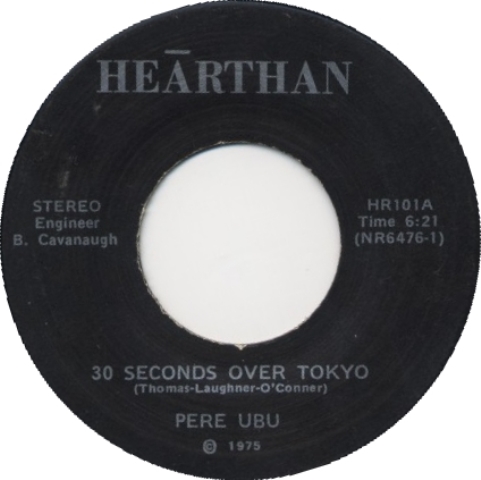 For meticulous Pere Ubu fans, Peter Laughner was initially a name in their credits. His wayward, substance-driven behaviour meant he was sacked from them before they attracted international attention but his song “Life Stinks” was on their debut album. “Ain’t it Fun”, another of his musical downers, was heard on the first album by fellow Clevelanders The Dead Boys (it was later preposterously covered by Guns N’ Roses). He was dead by the time each album was issued. Both songs were originally in the repertoire of Rocket From The Tombs, the band which in 1975 splintered into The Dead Boys and Pere Ubu. (Pictured right, Pere Ubu's 1975 debut single "30 Seconds Over Tokyo")
For meticulous Pere Ubu fans, Peter Laughner was initially a name in their credits. His wayward, substance-driven behaviour meant he was sacked from them before they attracted international attention but his song “Life Stinks” was on their debut album. “Ain’t it Fun”, another of his musical downers, was heard on the first album by fellow Clevelanders The Dead Boys (it was later preposterously covered by Guns N’ Roses). He was dead by the time each album was issued. Both songs were originally in the repertoire of Rocket From The Tombs, the band which in 1975 splintered into The Dead Boys and Pere Ubu. (Pictured right, Pere Ubu's 1975 debut single "30 Seconds Over Tokyo")
Laughner became more than a footnote when writers like Christopher Stigliano, Jon Savage and Clinton Heylin began digging into who he was. Heylin’s 1993 book From the Velvets to the Voidoids included the first widely available in-depth consideration of his significance. There had been a single-album Laughner bootleg collection in 1982, and a double album followed Heylin’s book in 1993. In 1987 and 1992 a couple of Laughner singles were issued. Material by Rocket From The Tombs had seeped out. Now, the Peter Laughner box set has arrived.
Instead of simplifying Laughner’s legacy, Peter Laughner makes getting to grips with it more challenging as the sheer volume of what’s assembled is daunting. The book brings together for the first time an extensive selection of his writing. It also includes a detailed though pithy summary of his action-packed life and activities, as well as the also ill-fated Lester Bangs’ obituary of Laughner. There are further essays, loads of photos, a track-by-track commentary and more. Fifty-six tracks are heard. The final disc is taken from a tape of 13 solo recordings made on the night of 21 June 1977. After turning the recorder off, Laughner died in his sleep from pancreatitis.
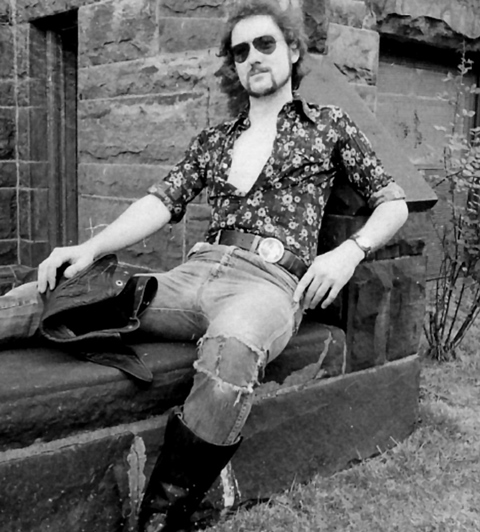 The audio sources are home and rehearsal recordings, tapes of live shows and radio appearances. Throughout, the sound quality is better than would be expected and the track choice and sequencing has a flow representing Laughner’s development and fixations. The cover versions unashamedly declare where he was at. He wanted to embody the creators of what he covered, a tendency which meant he performed Television songs before they were issued on record; real-time reportage of his preoccupations, aided by his taping of Television shows. (Pictured left, Peter Laughner in 1974. Robert Bensick)
The audio sources are home and rehearsal recordings, tapes of live shows and radio appearances. Throughout, the sound quality is better than would be expected and the track choice and sequencing has a flow representing Laughner’s development and fixations. The cover versions unashamedly declare where he was at. He wanted to embody the creators of what he covered, a tendency which meant he performed Television songs before they were issued on record; real-time reportage of his preoccupations, aided by his taping of Television shows. (Pictured left, Peter Laughner in 1974. Robert Bensick)
Disc One (or LP one) is dedicated to 1972. Dylan/The Band, Michael Hurley, Little Feat, The Lovin’ Spoonful and The Insect Trust are covered as is material by or related to The Velvet Underground. There are also versions of songs associated with Jimmie Rodgers and Arthur Crudup. His own songs are forceful, forcefully delivered and suggest an outlook – though dark, deadpan and more linear – along the lines of a more musical Fugs. In 1972, Laughner was a rootsy, beat-inclined singer-songwriter/interpreter with a yen for Americana. In the Sixties, Vanguard Records might have picked him up.
What comes next follows a radical shift. He had seen Bowie and Reed, and Disc Two’s summation of 1973 and 1974 includes astonishing June 1973 Cinderella Backstreet live versions of “All Along the Watchtower” and “Heroin”. Laughner and his band turn the songs inside out. The forcefulness has been channelled and ramped up. With its lengthy, eerie Mellotron passage, “…Watchtower” is mind-bogglingly intense. God knows what those gathered in a basement gay bar in the small town of Sandusky made of this. From the same show, a bone-shaking “White Light, White Heat” segues into the extreme freeform noise of "Call the Ambulances”.
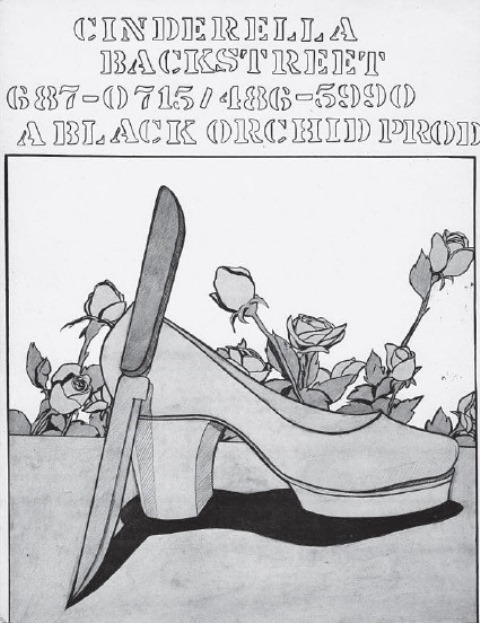 But, typically, Laughner did not stick with the startling Cinderella Backstreet. As the 1973 to 1977-dedicated Disc Three shows, he hadn't abandoned the more subdued tactics heard on Disc One. A summer 1976 recording of “Baudelaire”, one of his key songs, shows he was always a beat at heart and acknowledges his fascination with Patti Smith. The same goes for a haunting rendition of “Sylvia Plath”, another of his benchmark songs, recorded at the same time. (Pictured right, 1973 press ad for Cinderella Backstreet)
But, typically, Laughner did not stick with the startling Cinderella Backstreet. As the 1973 to 1977-dedicated Disc Three shows, he hadn't abandoned the more subdued tactics heard on Disc One. A summer 1976 recording of “Baudelaire”, one of his key songs, shows he was always a beat at heart and acknowledges his fascination with Patti Smith. The same goes for a haunting rendition of “Sylvia Plath”, another of his benchmark songs, recorded at the same time. (Pictured right, 1973 press ad for Cinderella Backstreet)
That Laughner remained balancing the deliberate with the unrestrained is confirmed by Disc Four (1974 to 1977) which includes a razor-sharp previously unheard version of “Ain't it Fun”, recorded live in February 1975 with Rocket From The Tombs. “Dear Richard”, from a November 1976 Friction show, is almost knocked of its rails by Laughner’s wild guitar.
Then, Disc Five arrives. Knowing that these solo tracks were taped hours before Laughner’s death influences any appreciation of them – it is impossible not to look for messages. Especially in the version of Robert Johnson’s “Me and the Devil Blues”. Effectively, it seems a worn out-sounding Laughner was chronicling the jukebox inside his head. The Stones’ “Wild Horses” is played as are two Jesse Winchester songs, and one apiece by Van Morrison and the Velvets. Laughner's own material includes the upbeat though barbed “Everything I Say Just Goes Right Through Her Heart” and the brittle “(Going to) China”. He also runs through Television’s “See No Evil” and “Come On In” (a song they never recorded). There is also an intuitive take of Richard Hell’s “Blank Generation”.
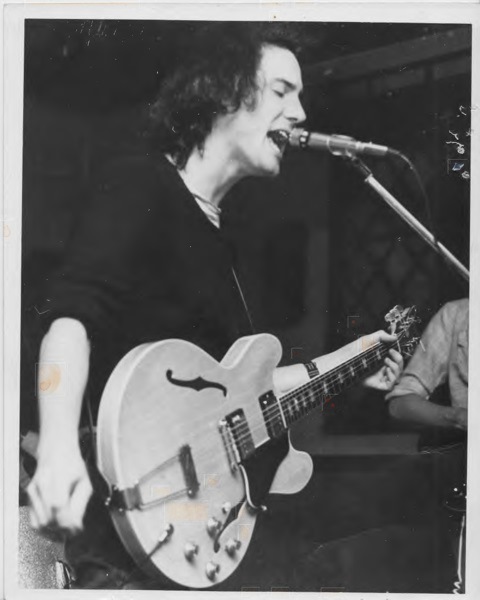 Hell later wrote that “Laughner was self-destructive, smart, a natural-born guitar player and grew from the same roots as the CBGB bands. [He] liked to think about things, and analyze them, too…as well being the most self-destructively drug-hungry drunk of all the many I’ve known. He flatly yielded, no resistance, to his impulse to take drugs and drink, the way anyone else would scratch their nose when it itched. When I knew him in New York I didn’t know about his talent but only his drunken fanaticisms.” (Pictured left, Peter Laughner in early 1976. Mik Mellen / Mary-Ann Livchak)
Hell later wrote that “Laughner was self-destructive, smart, a natural-born guitar player and grew from the same roots as the CBGB bands. [He] liked to think about things, and analyze them, too…as well being the most self-destructively drug-hungry drunk of all the many I’ve known. He flatly yielded, no resistance, to his impulse to take drugs and drink, the way anyone else would scratch their nose when it itched. When I knew him in New York I didn’t know about his talent but only his drunken fanaticisms.” (Pictured left, Peter Laughner in early 1976. Mik Mellen / Mary-Ann Livchak)
Later on still, Hell discovered “the quality of his taste and talent; the depth of his self-doubt and concomitant surrender to drugs and other means of self-escape; and his generosity (he encouraged and improved the lives of many people in Cleveland). He was pure and so tainted at once. He gave people joy and tore them up.”
Little about this box set is easy. But it is clear that Peter Laughner was as Hell found him: a man on a mission – a man who also lacked the resistance and strategies to prevent being destroyed by what he brought on board to undertake that mission. He'll never know it but, ultimately, he succeeded. In a December 1975 interview with Pere Ubu, Laughner said "we're pointing towards the music of the '80s." As a primary figure in the construction of an American art rock, Peter Laughner achieved what he set out to do. The proof is here.
- Next week: 1977 The Year Punk Broke and Optimism / Reject Punk & Post-Punk Meets DIY Aesthetic – box sets documenting the malleable worlds of Brit-punk and what came next
- Read more reissue reviews on theartsdesk
- Kieron Tyler’s website
Explore topics
Share this article
The future of Arts Journalism
You can stop theartsdesk.com closing!
We urgently need financing to survive. Our fundraising drive has thus far raised £49,000 but we need to reach £100,000 or we will be forced to close. Please contribute here: https://gofund.me/c3f6033d
And if you can forward this information to anyone who might assist, we’d be grateful.

Subscribe to theartsdesk.com
Thank you for continuing to read our work on theartsdesk.com. For unlimited access to every article in its entirety, including our archive of more than 15,000 pieces, we're asking for £5 per month or £40 per year. We feel it's a very good deal, and hope you do too.
To take a subscription now simply click here.
And if you're looking for that extra gift for a friend or family member, why not treat them to a theartsdesk.com gift subscription?
more New music
 Soulwax’s 'All Systems Are Lying' lays down some tasty yet gritty electro-pop
Belgian dancefloor veterans return to the fray with a dark, pop-orientated sound
Soulwax’s 'All Systems Are Lying' lays down some tasty yet gritty electro-pop
Belgian dancefloor veterans return to the fray with a dark, pop-orientated sound
 Music Reissues Weekly: Marc and the Mambas - Three Black Nights Of Little Black Bites
When Marc Almond took time out from Soft Cell
Music Reissues Weekly: Marc and the Mambas - Three Black Nights Of Little Black Bites
When Marc Almond took time out from Soft Cell
 Album: Mobb Deep - Infinite
A solid tribute to a legendary history
Album: Mobb Deep - Infinite
A solid tribute to a legendary history
 Album: Boz Scaggs - Detour
Smooth and soulful standards from an old pro
Album: Boz Scaggs - Detour
Smooth and soulful standards from an old pro
 Emily A. Sprague realises a Japanese dream on 'Cloud Time'
A set of live improvisations that drift in and out of real beauty
Emily A. Sprague realises a Japanese dream on 'Cloud Time'
A set of live improvisations that drift in and out of real beauty
 Trio Da Kali, Milton Court review - Mali masters make the ancient new
Three supreme musicians from Bamako in transcendent mood
Trio Da Kali, Milton Court review - Mali masters make the ancient new
Three supreme musicians from Bamako in transcendent mood
 Hollie Cook's 'Shy Girl' isn't heavyweight but has a summery reggae lilt
Tropical-tinted downtempo pop that's likeable if uneventful
Hollie Cook's 'Shy Girl' isn't heavyweight but has a summery reggae lilt
Tropical-tinted downtempo pop that's likeable if uneventful
 Pop Will Eat Itself's 'Delete Everything' is noisy but patchy
Despite unlovely production, the Eighties/Nineties unit retain rowdy ebullience
Pop Will Eat Itself's 'Delete Everything' is noisy but patchy
Despite unlovely production, the Eighties/Nineties unit retain rowdy ebullience
 Music Reissues Weekly: The Earlies - These Were The Earlies
Lancashire and Texas unite to fashion a 2004 landmark of modern psychedelia
Music Reissues Weekly: The Earlies - These Were The Earlies
Lancashire and Texas unite to fashion a 2004 landmark of modern psychedelia
 Odd times and clunking lines in 'The Life of a Showgirl' for Taylor Swift
A record this weird should be more interesting, surely
Odd times and clunking lines in 'The Life of a Showgirl' for Taylor Swift
A record this weird should be more interesting, surely
 Waylon Jennings' 'Songbird' raises this country great from the grave
The first of a trove of posthumous recordings from the 1970s and early 1980s
Waylon Jennings' 'Songbird' raises this country great from the grave
The first of a trove of posthumous recordings from the 1970s and early 1980s

Add comment